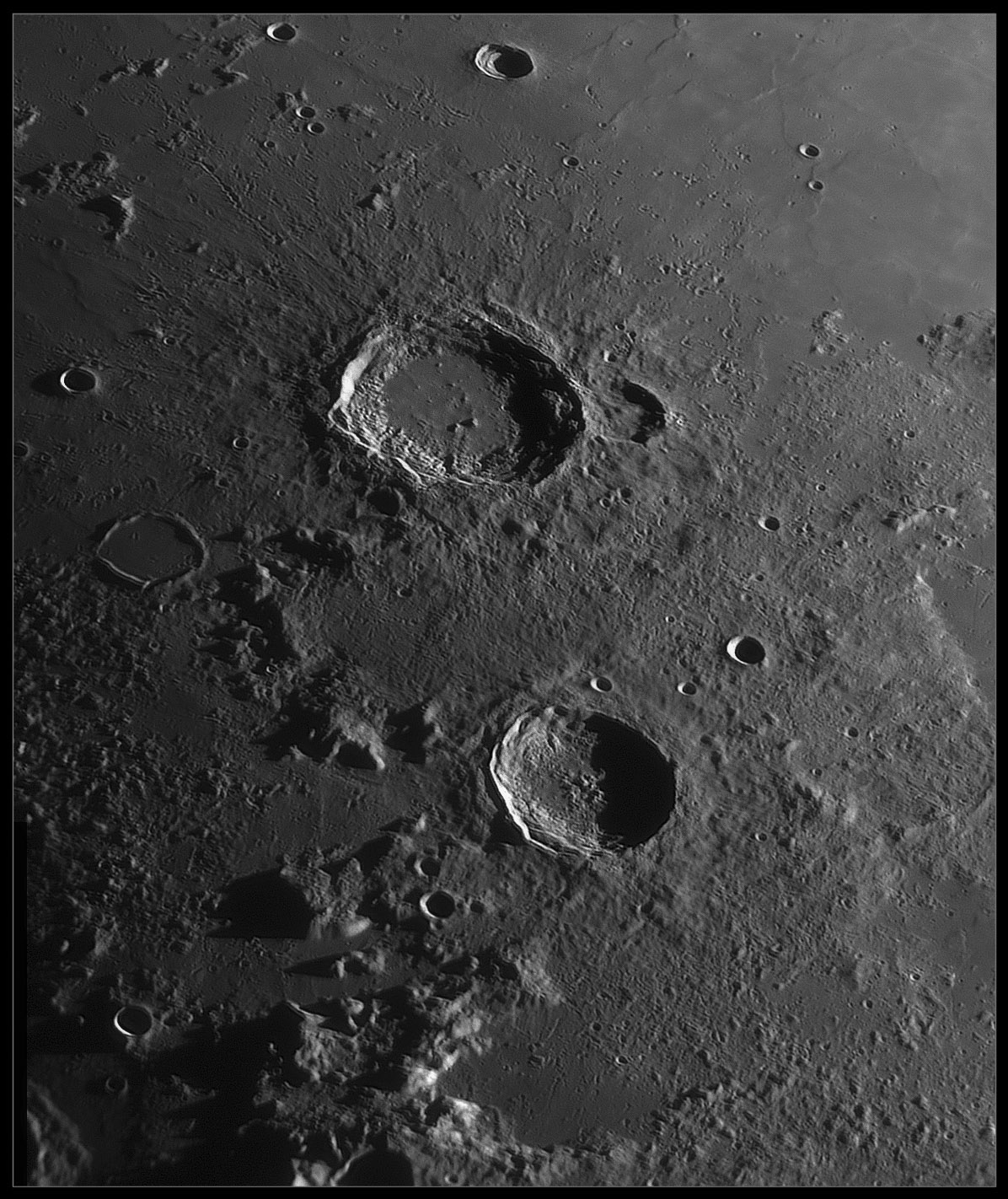Difference between revisions of "May 21, 2013"
| Line 17: | Line 17: | ||
<em>[http://lpod.wikispaces.com/21st+Century+Atlas+of+the+Moon 21st Century Atlas]</em> chart 10.<br /> | <em>[http://lpod.wikispaces.com/21st+Century+Atlas+of+the+Moon 21st Century Atlas]</em> chart 10.<br /> | ||
<br /> | <br /> | ||
| + | <p><b>Yesterday's LPOD:</b> [[May 20, 2013|Moonless Nights]] </p> | ||
| + | <p><b>Tomorrow's LPOD:</b> [[May 22, 2013|Layers of "B"]] </p> | ||
<hr /> | <hr /> | ||
Revision as of 11:49, 7 February 2015
A Masterpiece

image by Damian Peach, Selsey, UK
Aristoteles and Eudoxus are two of the largest young craters in the north polar region of the Moon. Aristoteles is 87 km wide and Eudoxus has a diameter of 67 km. These craters look pretty similar, both have terraced walls and hilly floors, apparently veneered with some smooth material - perhaps impact melt. Which is youngest? The larger crater has radial ejecta and secondary craters on nearby Mare Frigoris. Because Eudoxus formed on rubbly Imbrium ejecta, its secondary craters are harder to recognize. The US Geological Survey assigns Eudoxus a stratigraphic age of Copernican, whereas Aristoteles is Eratosthenian. This means that Eudoxus is younger than 1.1 billion years old, and Aristoteles is somewhere between 1.1 and 3.2 b.y. old. Since both craters have about the same number of superposed (subsequent) impact craters, the two craters must be very near the Copernican-Eratosthenian boundary, with one slightly older and the other slightly younger.
The words above were the caption for an LPOD from 9 years ago. The words are still good but Damian's image captures so much more than even the best images of nearly a decade ago.
Chuck Wood
Technical Details
April 17, 2013.
Related Links
Rükl plate 13
21st Century Atlas chart 10.
Yesterday's LPOD: Moonless Nights
Tomorrow's LPOD: Layers of "B"



